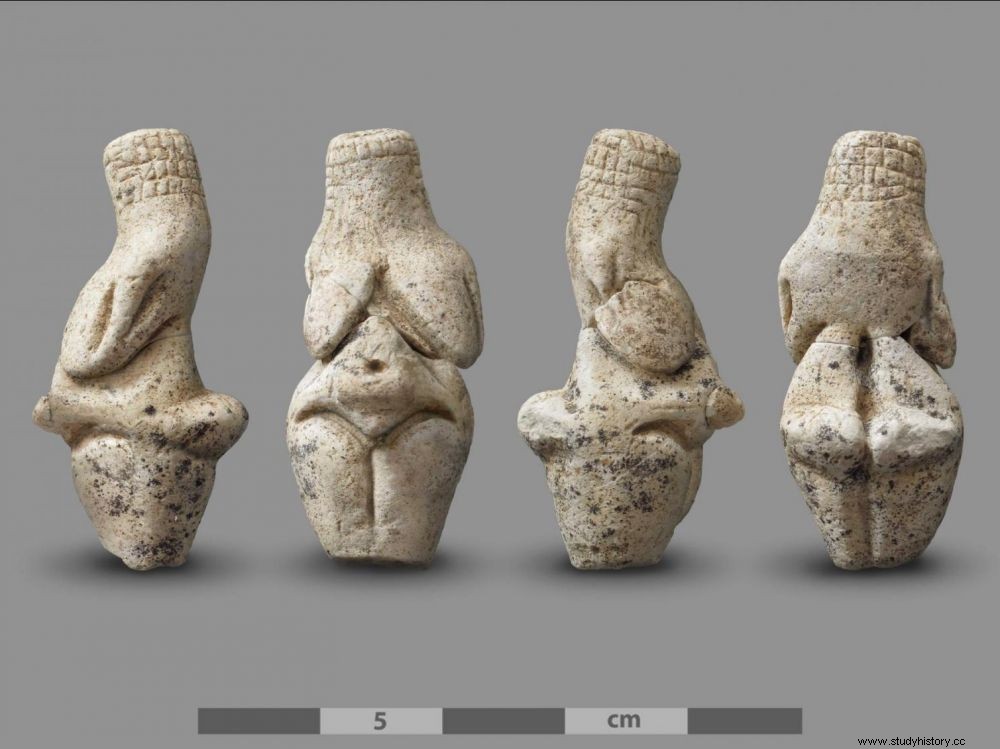A remarkable female statuette carved 23,000 years ago has just been revealed. It was discovered this summer during archaeological digs in Amiens.

This Venus with "face represented without features, arms just sketched" , will join the rare examples of these portable works of art unearthed since the 19th century between the Pyrenees and Siberia.
Miraculous! 23,000 years after being fashioned from a block of chalk, a steatopygous "Venus" -with gluteal volume, hypertrophied thighs and breasts- has just re-emerged from distant prehistory, an exceptional witness to the Gravettian period. Discovered in a camp of Paleolithic hunters, the remarkably preserved tiny figurine comes to close in beauty a series of about fifteen statuettes brought to light on the prehistoric deposit of Renoncourt, a district of Amiens (Somme), studied since 2014. "Like all beautiful discoveries, we found it in the last days of excavations, on the last square meters" of the plot in question, said Clément Paris, director of excavations for Inrap (National Institute for Preventive Archaeological Research), during a press conference.
The Renancourt site is one of the rare testimonies of the presence of modern man
This Venus with "face represented without features, arms just sketched" , will join the rare examples of these portable works of art unearthed since the 19th century between the Pyrenees and Siberia. 4 cm high, topped with a "fishnet" made of fine incisions, it evokes other famous Venuses, such as the "Hooded Lady" of Brassempouy (Landes) or the "Venus of Willendorff" (Austria).
The Gravettian culture developed in Europe between 28,000 and 22,000 years ago, during the Upper Palaeolithic, a very poorly documented period. The Renancourt site is one of the rare testimonies of the presence of modern man (Homo sapiens) in the north of France, a region known for its archaeological wealth despite the absence of caves.
A manufacturing workshop?
Nomadic hunter-gatherers lived there, in camp. We were then in the middle of the ice age - the Scandinavian glacier was only a hundred kilometers from the Somme - and the populations would have taken advantage of a "climate micro-improvement" to settle in these steppe landscapes populated by mammoths, woolly rhinoceros, hares... In addition to the statues, archaeologists have unearthed many remains on this site:animal bones, tools, ornaments... All very well preserved at a depth of four meters under the ground thanks to the silt.
Why did these hunters carve these "Venuses"? Several interpretations are possible, but the hypothesis put forward is that of a workshop where the objects were made on site, as indicated by the thousands of fragments of chalk found, probable remains of manufacturing waste.
Until 2014, only about fifteen statuettes sculpted by the Gravettian had been found in France - the last excavation dated back to 1959. "In a few years we doubled the number of statuettes" , who are now around thirty in France, and a hundred throughout Europe, welcomes Clément Paris. And unlike the digs of the 1950s "done in a rather rough fashion" , modern excavation techniques should make it possible "to understand the place of these objects within the habitat" , hopes the archaeologist.
